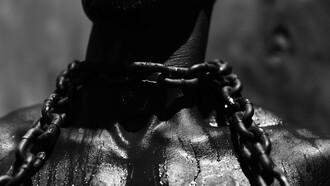Have you ever thought about Somalia or Somalis? What was your initial impression? Positive or negative? Perhaps you've come across news about the country and wondered about its reality. Did the headlines ever spark a curiosity to visit, despite the stories you've heard? If you met a Somali person, what would be your first thought? Would you see beyond the stereotypes and discover the rich culture, warmth, and resilience that define them?
For many, the Somali identity has been tarnished by images of piracy, droughts, terrorism, and famine — a narrative mainly made by Western media. Although these issues have certainly affected the Somali society, they are far from defining the whole of Somali culture and resilience. I invite you to see the Somali identity through my eyes, as a young Somali woman, to discover a rich tapestry of heritage, innovation, and hope.
The Somali people are spread across the Horn of Africa in Somalia, Somaliland (unrecognized internationally), Djibouti, Kenya, and Ethiopia. This division, a result of European colonialism, has not fragmented our shared language and culture. Despite political borders, the ties of kinship, tradition, and a common tongue remain very strong.
The Somali Civil War displaced many, forcing them to seek refuge and opportunities abroad. The wounds of conflict are still visible, yet the spirit of resilience and the drive for progress continue to shine. Somali entrepreneurship, developed from necessity, has become a pillar of our economy.
Take Telesom, for instance, the largest telecommunications company in Somaliland. We provide some of the most advanced internet and telecommunication services in Africa. Dahabshil, another success story, stands as the largest money-transfer business on the continent, allowing the Somali diaspora to support their families and relatives back home. These enterprises represent the creativity and determination of the Somali people.
Somaliland, with its relative stability, presents vast potential for investment. From its pristine beaches to its abundant marine resources, there is much to explore and develop. Laas Geel, home to some of the earliest known cave paintings, and the historic port town of Zeila, with its rich archaeological sites and breathtaking islands, are just a few of the region's treasures.
Somali cuisine, too, reflects our vibrant culture. Influenced by centuries of trade, our dishes are a delightful blend of flavors. I recommend trying bariis iskukaris which is a fragrant rice dish, and Somali tea, spiced to perfection, for a true taste of our heritage.
Throughout Somalia's and Somaliland’s growing urban cities, signs of progress and modernization are seen. However, outside stereotypes paint a negative picture, often portraying it as a dangerous and undesirable place. This perception is far from the truth. In reality, both Somalia and Somaliland are undergoing a vibrant transformation, with new buildings, infrastructure, and a rich cultural revival creating progress and potential. The spirit of hope among the people is driving this change, making a brighter future and challenging outdated views. Despite past struggles, the Somali nations are emerging as a place of promise and opportunity.
As a young Somali woman, I dream of a time when my people can prosper in their homeland, free from the shadows of conflict and deprivation. I aspire for a future where the next generation can grow up with opportunities and stability, choosing to stay and build their lives in a prosperous and peaceful country.
The Somali identity is multifaceted, full of culture, history, and potential. It is time to look past the headlines and recognize the resilience and aspirations of the Somali people. We are a community defined not by our struggles, but by our strength, our entrepreneurial spirit, and our unwavering faith for a better tomorrow.














